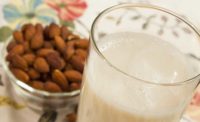
Consumers are now more aware and cautious than ever before when purchasing food products. They read the nutritional information on the package label and try to understand the impact of the packaging materials on human health and the planet. Sustainability, health benefits, product quality, lifestyle, dietary choices (e.g., vegan), etc., are some of the other factors influencing purchasing behavior. Consumers’ perception about the sustainability of food production and processing systems influences the choices of dairy and plant-based dairy alternatives. At times, there are differences about perception of sustainability between consumer and dairy industry. According to the United Nations, sustainable development includes economic (profit), social (people), and environmental (planet) sustainability. The dairy industry worldwide focuses on minimizing product losses, preserving the environment, and using natural resources responsibly, while consumers may place greater emphasis on how food production systems benefit and affect the well-being of people, animals, and the environment.
The global dairy market size was valued at $481.08 billion in 2019 and is expected to grow at a compound annual growth rate (CAGR) of 2.5% from 2020 to 2027. Likewise, the market for plant-based dairy alternatives is growing at a CAGR of 13.3% with projected market value of $53.9 billion in 2028. Since both dairy and plant-based products have their own benefits, consumers’ perception of which category has more pros or less negative impact on environment, plays a key role in its growth.
Benefits of dairy
Many studies have proven that milk is “almost” a complete food. It contains fat, protein, carbohydrates, vitamins, and minerals. Dairy products contain high-quality proteins — whey and casein — and the biological value of them is very high as compared to their plant-based counterparts. This means that dairy can provide all essential amino acids in readily absorbed form. Also, these products are a good source of calcium, phosphorus, magnesium, and potassium. Calcium found in milk is readily absorbed by the body and phosphorus, in the proper ratio to calcium, is needed to form bone. Milk is also a significant source of vitamin B2, A, and D which fosters a stronger, healthier body (e.g., bones, skin, teeth), boosts immunity, and promotes cell development.
Compared to dairy products’ pleasant aroma, rich mouthfeel, and smooth texture, plant-based dairy alternatives can result in a residual beany flavor from soy or garbanzo, paint-like off-flavors, bitterness from different seeds, and chalky mouthfeel. The fat, protein, carbohydrate, and other micronutrients can be separated, or their levels can be adjusted by using advanced technologies (e.g., membrane filtration) which enable dairy ingredients to be used in wide variety of foods. The vegan and vegetarian population places more importance on animal welfare in their food decision-making process. However, the use of dairy products is more acceptable since it doesn’t involve animal slaughter; therefore, it doesn’t hurt their sentiments and belief.
Although dairy products have many advantages, there are some misperceptions associated with it on the environmental/sustainability side such as pollution, land use, and emission of greenhouse gases in dairy production processes. There also could be some health-related concerns of select dairy products to calorie-conscious consumers, such as flavored yogurt with added sugar that has high-calorie content, preservatives, and flavor enhancers. Dairy products are not suitable for some individuals with milk-related digestive problems and/or allergies.
Plant-based dairy alternatives
Plant-based dairy products provide an alternative to conventional dairy products that can be consumed by those who have dairy allergies, lactose intolerance, or follow a vegan lifestyle. Since there is no set definition or standard of identity (SOI) for plant-based dairy products, there is more flexibility in terms of their nutrient composition and quality attributes. Past studies demonstrate that plant-based products have some health and nutritional benefits. These include improved immune system function, potential antimicrobial effects, reduced risk of cardiovascular and gastrointestinal diseases; however, the biological value of plant proteins is not on par with dairy proteins.
Despite being versatile, plant-based dairy products have many disadvantages. Plant-based proteins are not very functional from a food processing and formulation perspective. For example, they are more hydrophobic, making it difficult to incorporate them into a product using conventional technologies. Plant-based dairy products are often more expensive than dairy products. And while sustainability is one of the main reasons many consumers choose plant-based vs. dairy products, there is no clear data or study to show that production of plant-based products is more sustainable than dairy products.
Marketing and consumers’ perceptions
Plant-based dairy products are often presented as sustainable alternatives to the dairy products. Apart from product labels, consumers seek sustainability information from company websites, social media, government, and private organizations. To compete with plant-based dairy products, dairy companies must understand how consumers perceive sustainability. Based upon this information, they should develop communication strategies to educate consumers about a holistic view of sustainability.
In 2018, 21% of dairy products launched with a “grass-fed” claim. Consumer research shows that there is a difference in how consumers perceive sustainability between products. Also, many consumers still struggle to define terms like resource recycling, ecological balance, non-GMO, organic, etc. Although consumers look for greater transparency from companies, they do not always trust or understand the information provided by them. This indicates a genuine need for dissemination of easily understandable information from industries or government to the consumers.



